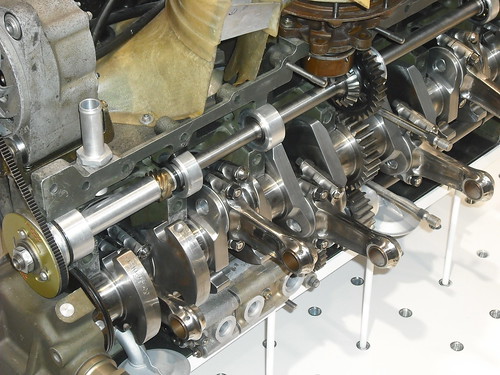I will be firing the #1 cylinder in the rear engine and the #6 cylinder in the front engine at the same time, and so on, so that a cylinder will fire on opposite sides on each engine. I don't think you can fire one cylinder at a time between the engines, like a 12 cylinder engine, without having two cylinders firing on one side, one after the other, and then two on the other side.
I have a C6 Corvette so I took the measurements off my car. I guess it would have been cheaper to buy a CD! :sad: I have a vintage auto and race car restorer in CT that also runs a vintage racing shop who will do the final suspension set up.
I have a Subaru tuner in CT. that will do the computer, wiring and exhaust work work.
The car will be used for track days and hillclimbs, probably driven by an old fart like me, so hopefully there won't be too much strain on the drive train. There is some flexibility in my adapter as I have used a second drive/flex plate mounted face to face to transfer the front engine's drive to the rear engine.
This car will be on YouTube shortly, as soon as I paint the chassis, (Porsche 917/10 Replica), and at Lime Rock on the first weekend of September for their vintage festival and then it will be auctioned off on e-Bay.
This will be the only 917/10 I will build. (when Fran says a tube frame chassis is expensive to build, BELIEVE HIM!) My next project will be a Brabham BT 44B which I will also sell. I am building and selling my dream cars.
I don't know why my latest photos whouldn't upload and I'm too tired to find ouT. Here is my next project photo.
Jack








